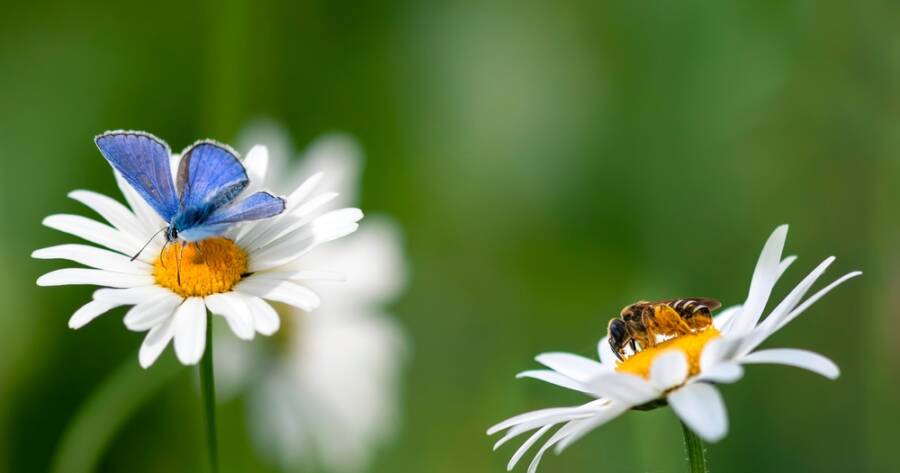A vibrant garden filled with bees and butterflies isn’t just beautiful—it plays a vital role in supporting local ecosystems. These hardworking pollinators rely on specific flowers for nectar, pollen, and shelter, and the choices you plant can make a big difference. By selecting blooms that attract and nourish them, you’ll help sustain healthy pollinator populations while enjoying a colorful, thriving garden. Supporting bees and butterflies starts with planting the right flowers in your own backyard.
Lavender
Lavender is a favorite among bees and butterflies thanks to its fragrant blooms and rich nectar supply. Its long flowering season and vibrant purple hues make it a standout in any garden. Additionally, lavender’s strong scent acts as a natural pest repellent, benefiting both your pollinators and other plants.
Plant lavender in a sunny spot with well-drained soil. Its drought-resistant nature and minimal maintenance needs make it an excellent addition for gardeners of all skill levels looking to support pollinators effortlessly.
Bee Balm
As the name suggests, bee balm is a magnet for bees, butterflies, and even hummingbirds. Its tubular flowers provide easy access to nectar, and it comes in a range of bright colors like red, pink, and purple. The plant’s aromatic foliage adds an extra layer of appeal to any pollinator-friendly space.
Bee balm thrives in full sun and slightly moist soil. Regular deadheading encourages continuous blooms, ensuring a steady food source for visiting pollinators throughout the growing season.
Coneflowers (Echinacea)
Coneflowers are hardy perennials that produce large, daisy-like blooms packed with nectar. Both bees and butterflies are drawn to their vibrant pink, purple, or white petals, and the seed heads also attract birds later in the season.
Coneflowers are incredibly resilient, tolerating poor soil and drought conditions. Plant them in sunny areas, and they’ll provide color and pollinator support year after year with minimal effort. Their long bloom time ensures a continuous feast for visiting pollinators.
Milkweed
Milkweed is essential for monarch butterflies, serving as both a nectar source and the only plant where monarchs lay their eggs. Its clusters of pink, orange, or white flowers also attract bees and other butterflies seeking nectar.
Though it has a reputation for spreading, milkweed is easy to manage and thrives in a variety of conditions. Including this native plant in your garden supports declining monarch populations and promotes a healthy pollinator habitat.
Black-Eyed Susans
Black-eyed Susans add cheerful pops of yellow to any garden while providing ample nectar and pollen for bees and butterflies. Their long blooming period—from mid-summer into fall—ensures consistent food availability throughout the season.
These low-maintenance flowers prefer full sun and well-drained soil but can tolerate a variety of growing conditions. Once established, they’re drought-resistant and self-seeding, creating an ever-expanding patch of pollinator-friendly blooms.
Zinnias
Zinnias are a favorite among butterflies, known for their bold colors and easy access to nectar. Available in various shapes and sizes, zinnias bloom profusely throughout the summer and are especially attractive to larger butterfly species.
These flowers thrive in sunny spots with well-drained soil and benefit from regular deadheading to encourage continuous blooms. Their vibrant display not only supports pollinators but also brightens your garden with minimal effort.
Planting for Pollinators, Planting for Life
Creating a garden filled with pollinator-friendly flowers is one of the simplest, most impactful ways to support bees, butterflies, and local ecosystems. Plants like lavender, coneflowers, and milkweed offer essential food sources while adding beauty and life to your outdoor space. Each bloom you cultivate plays a part in sustaining these vital species. By planting thoughtfully, you’ll foster a thriving garden—and a healthier planet—for seasons to come.

